The U.S. State Department has approved a $98.4 million sale of two types of missiles, torpedoes and various ammunition to Mexico for use on a new naval patrol frigate, a Defense Security Cooperation Agency news release said.
The sale includes six RGM-84L Harpoon Block II anti-ship missiles; 23 Rolling Airframe Missile (RAM) Block II surface-to-air missiles; and six Mk 54 Mod 0 lightweight torpedoes with two Mk 32 Surface Vessel Torpedo Tubes (SVTT) triple tube launchers, the Friday, January 6 release said.
Also included are 480 rounds of BA22 57mm high explosive programmable fuze ammunition along with 960 rounds of BA23 57mm practice ammunition; 250 rounds of AA98 25 mm high explosive and semi-armor piercing ammunition along with 750 rounds of A976 25mm target practice and tracer ammunition.
The sale also includes missile shipping and storage containers, spare and repair parts; support and test equipment; training and training equipment; U.S. government and contractor technical assistance; engineering and logistics support services; installation services; electronics and hardware to control torpedo launch; and other support.
The equipment, intended for use on the new Armada de México (Mexican Navy) Sigma 10514 Class ship, will be provided from U.S. stocks. Implementation of the sale will require support and oversight for approximately two years.
“This proposed sale will support the foreign policy and national security of the United States by helping to improve the security of a strategic partner,” the release said. “Mexico has been a strong partner in combating organized crime and drug trafficking organizations.”
The systems will provide enhanced capabilities in effective defense of critical sea lanes and will increase the Mexican Navy’s maritime partnership potential and align its capabilities with existing regional navies, the release added.
Sigma-class long range patrol frigate
The keel laying for the new Armada de México Sigma 10514 long range patrol vessel took place on August 18, 2017 at Damen Schelde Naval Shipyard in Vlissingen, the Netherlands.
Mexico has ten Damen-built vessels in its fleet.
Sigma-class vessels corvette- or frigate-size ships, and are based on a modular design in which the hull segments are designed as components. Sigma stands for Ship Integrated Geometrical Modularity Approach, and the type number describes the ship – meaning that 10514 stands for 105 metres (344 feet) long and with a beam of 14 metres (46 feet).
The Armada de México frigate will be constructed of six modules, with two to be constructed in Vlissingen and the other four in Mexico, and the six modules will be integrated in Mexico. Damen says the Mexican-built modules are related to control, propulsion, and detection systems.
According to Navy Recognition, the vessel will fitted with a BAE Systems Bofors 57 Mk3 57mm main gun and the Smart Mk2 radar by Thales, and will carry a helicopter.

Harpoon anti-ship missiles
Harpoon is an all-weather, over-the-horizon, anti-ship missile system introduced in 1977. It uses uses active radar homing and a low-level, sea-skimming cruise to improve survivability.
The Harpoon can be launched from various platforms including surface ships (the RGM-84 variant), submarines (the UGM-84 variant), fixed-wing aircraft (the AGM-84 variant), and land-based coastal defense batteries. The missile system was also developed into the Standoff Land Attack Missile (SLAM).
The RGM-84L Harpoon Block II missiles approved for sale to Mexico is an improved version intended to give enhanced resistance to electronic countermeasures and improved targeting. The original missile was designed as an open-ocean weapon and Block II adds a littoral (coastal) anti-ship capability.
Block II adds the inertial measurement unit from the Joint Direct Attack Munition, and the software, computer, GPS/inertial navigation system from the SLAM Expanded Response (SLAM-ER).

Rolling Airframe Missiles
The RIM-116 Rolling Airframe Missile (RAM) is a small, lightweight, infrared-homing surface-to-air missile designed for naval use and intended as a point-defense weapon against anti-ship cruise missiles. Like a bullet fired from a rifled barrel, the missile rolls on longitudinal axis to stabilize its flight path, hence the name.
The Rolling Airframe Missiles, together with the Mk 49 Guided Missile Launching System (GMLS) and support equipment, make up the RAM Mk 31 Guided Missile Weapon System (GMWS). The Mk-144 Guided Missile Launcher (GML) unit stores 21 missiles.

The original (Block 0) weapon cannot use its own sensors prior to firing and must be integrated with a ship’s combat system to direct the launcher. Based on the AIM-9 Sidewinder air-to-air missile, Block 0 missiles initially home in on radiation such as radar emitted from a target and then switch to an infrared seeker for terminal guidance.
Block I (RIM-116B) is an improved version that adds an overall infrared-only guidance system.
The Block II missiles approved for sale to Mexico is an upgraded, more maneuverable version with an improved passive radio frequency seeker and upgraded infrared seeker.
MK 54 lightweight torpedoes
The Mark 54 Lightweight Hybrid Torpedo is a standard anti-submarine warfare torpedo developed by Raytheon and introduced in 2004. It combines the homing section of the Mk 50, and the warhead and propulsion of the Mk 46 improved for better performance in littoral waters.


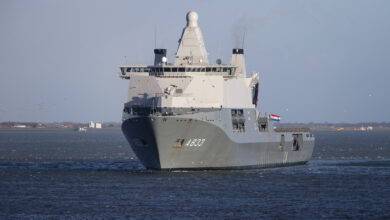
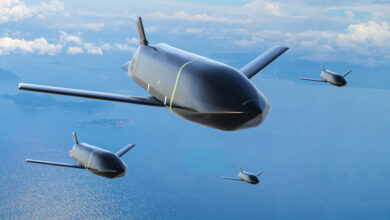

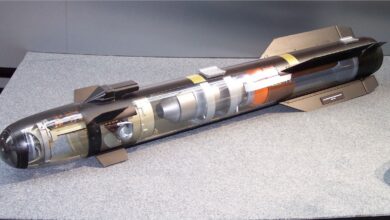


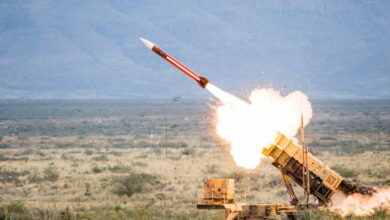
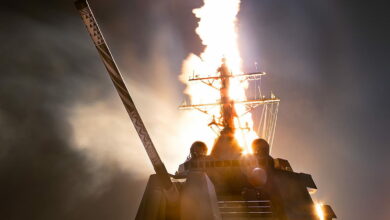


3 Comments